Hanok Stay Joadang [Korea Quality] 한옥스테이 조아당[한국관광 품질인증]
12.4Km 2 2023-09-12
11, Wonhyo-ro 213beon-gil, Gyeongju-si, Gyeongsangbuk-do
+82-10-6520-5074
oadang is a private hanok stay on Wonhyoro-gil, Gyeongju, Gyeongsangbuk-do. The inside of this traditional hanok is finished with cypresswood, and guests can catch the scent of cypress and feel refreshed. There are two guestrooms, both with a queen-size bed, and one with its own bathroom. The location is great for walking and for seeing the sights of Gyeongju.
Gyeongju Gyerim Forest (경주 계림)
12.4Km 24781 2020-07-06
Gyo-dong, Gyeongju-si, Gyeongsangbuk-do
+82-54-779-8743
Gyerim Forest is located between the Cheomseongdae Observatory and Wolseong Fortress. The forest is thickly populated by ancient zelkova and willow trees rooted on gently sloping hills and along the small stream in the northwest part of the woods. According to legend, the forest is closely associated with myths surrounding the birth of Alji, the founder of the Gyeongju Kim clan. As such, it is designated national Historic Site No. 19.
Legend has it that King Talhae heard a rooster crying from deep inside the Sirim Woods. Chancellor Hogong was sent to investigate. Upon arriving, he found a rooster crying underneath a tree on which hung a golden box. Hogong immediately reported his find to the king, who instructed him to bring the golden box into the palace. The king opened the box and found a small child inside, Kim Alji. The forest, which had previously been called ‘Sirim’ or ‘Gurim’, became known as ‘Gyerim’, ('gye’ meaning rooster). The name Gyerim was also used to refer to the Silla kingdom.
Alji was adopted as the king’s son, but because the crown was passed on to King Pasa of the Park family, he never ascended the throne. The Kim clan later became the royal bloodline with the coronation of King Naemul some years later.
The memorial stone recording the birth of Kim Alji was erected in the third year of King Sunjo's rule in the Joseon dynasty. Located close to the royal fortress of Silla, the forest is still deeply revered as the mystical birthplace of the first ancestor of the royal Kim clan of Silla. Yellow canola blossoms along the path connecting Daereungwon with Gyerim and Banwolseong only add to the magical ambiance of the forest.
Silla Sori Festival - Emille (신라소리축제 에밀레전)
12.4Km 5047 2021-01-08
274, Gyo-dong, Gyeongju-si, Gyeongsangbuk-do
• 1330 Travel Hotline: +82-2-1330 (Korean, English, Japanese, Chinese) • For more info: +82-53-427-5114
Silla Sori Festival mainly focuses on the King Seongdeok Divine Bell (Emille Bell), established during the Unified Silla period, and takes place in Gyeongju, embracing its thousand-year-old heritage. The festival has been held to acknowledge the value and legacy of this traditional Korean bell dating back to the Silla period.
Woljeonggyo Bridge (월정교)
12.4Km 2725 2023-01-03
31, Gyochonan-gil, Gyeongju-si, Gyeongsangbuk-do
+82-54-779-6100
Woljeonggyo Bridge located in Gyo-dong, Gyeongju was built during the Unified Silla period (AD 676-935), but was burnt down during the Joseon dynasty. Through historical research, the bridge was rebuilt in April 2018 to become the largest wooden bridge in Korea. According to Samguk Sagi (History of the Three Kingdoms), the bridge was built during the 19th year of King Gyeongdeok’s reign (AD 760), connecting Wolseong and Namsan together. The historical research to rebuild the bridge lasted from November 26, 1984 to September 8, 1986, finding that the bridge was made with wood for the first time. The first rebuilding of the bridge was from 2008 to 2013 and the finishing touches were added from April 2016 to April 2018. Through this research and rebuilding process, future restoration of historical buildings have a better reference to use.
Gameunsaji Temple Site (경주 감은사지)
12.4Km 26698 2020-04-04
Yongdang-ri, Gyeonju-si, Gyeongsangbuk-do
+82-54-772-3843
Gameunsaji Temple Site was built by King Munmu (AD 661-681), the king of Silla who unified Baekje and Goguryeo in the late 7th century. The purpose of the temple site was to pray for help and guidance from Buddha against Japanese invasion. Unfortunately, King Munmu passed away before the completion of the temple, and left a will to be cremated and buried in the East Sea so that he may reincarnate as a sea dragon in order to protect the country. As he wished, King Munmu's ashes were scattered at Daewangam of the East Sea. The temple was completed and was named by his son, King Sinmun (AD 681-692) in respect and appreciation for his father.
Gameunsaji Temple Site was rebuilt in 1979 based on the discovery of the site's foundation after two years of archeological research. The three-story stone pagoda at the temple site is a reminent of the early period of unified Silla, assembled with several parts which rise up to 13.4m high, known to be Silla's highest three-story pagoda.
Gyeongju Najeong Well (경주 나정)
12.4Km 12765 2020-04-06
Tap-dong, Gyeongju-si, Gyeongsangbuk-do
+82-54-779-6100
To the southeast of the royal tomb, is a small monument that has been erected among the pine trees; next to the monument is a well called Najeong. According to Samguksagi (Historical records of the Three Kingdoms) and Samgungnyusa (Memorabilia from the three dynasties), Park Hyeokgeose, the founding monarch of Silla, was born by this well. In 69 BC, Sobeolgong, the head of Goheochon Village, saw a white horse on its knees by the well. When he approached the well he found that the horse had magically disappeared and that a large egg was left in its place, from which a boy was born. When the boy turned 13 years old (57 BC), he was appointed king by the village chiefs and began to rule the area then called ‘Seorabeol’. A memorial stone (2.25 meters high, 45 centimeters long, and 21 centimeters wide) was erected in 1803 in the third year of King Sunjo's rule (Joseon dynasty) detailing the historical origins of the founding father of Silla.
Yosokkoong (요석궁)
12.5Km 53074 2020-07-14
19-4, Gyochonan-gil, Gyeongju-si, Gyeongsangbuk-do
+82-54-772-3347
Named after Silla King Muyeol's daughter, Princess Yoseok, Yosokkoong serves traditional Korean food. The resturant is run by the Choi family, who settled on the site of Princess Yoseok's house during the Joseon dynasty, and has passed on the restaurant and family recipes through 12 generations. All the foods served are made with organic ingredients, for a healthy taste that cannot be found anywhere else.
Cheomseongdae Observatory (경주 첨성대)
12.5Km 109092 2023-07-07
140-25, Cheomseong-ro, Gyeongju-si, Gyeongsangbuk-do
+82-54-772-3843
Cheomseongdae Observatory, constructed during the reign of Queen Seondeok (r. 632-647), is one of the landmark of Gyeongju. The observatory was built in a cylinder shape at approximately 9 meters in x_height. The observatory consists of 365 stones, symbolizing the number of days in a year. The rocks are piled in 27 layers symbolizing the 27th ruler, Queen Seondeok, and the days in a lunar month by adding the of two rock layers on top.
Gyeongju Royal Tomb of King Naemul (경주 내물왕릉)
12.5Km 13450 2020-04-04
Gyo-dong, Gyeongju-si, Gyeongsangbuk-do
+82-54-779-6100
King Naemul was the 17th monarch of the Silla Kingdom (in power from 356 to 402) and became the second king of the Kim family name. King Naemul was known as the first king to initiate the king title of ‘Maripgan’ and was known for spreading cultural advancements from China to the Korean people. When the allied forces of Baekje and Japan attacked, he asked Gwanggaeto the Great of Goguryeo for help and led the people to victory, contributing to the increased strength of the Silla Kingdom. After his rule, the throne was exclusively ceded to members of the Kim family clan.
The royal tomb of King Naemul is a large mound (22 m in diameter and 5.3 m in x_height) that sits on the northern hill of the Confucian school of Gyeongju. The edge of a natural stone is exposed around the bottom of the mound, pointing to the fact that the inner chamber tomb was made of stone. In the historical document Samguk Sagi (History of the Three Kingdoms), no records are found about the tomb, but the Samguk Yusa (Memorabilia of the Three Kingdoms) describes the king’s tomb as being located in the southwest of Cheomseongdae, which is consistent with the tomb’s location.
Gyeongju Bae-dong Samneung Royal Tombs (경주 배동 삼릉)
12.5Km 24056 2020-04-06
Bae-dong, Gyeongju-si, Gyeongsangbuk-do
+82-54-779-6100
Samneung meaning "three royal tombs," has strong ties to history. The three royal tombs house three kings of the Silla Kingdom: King Adala (8th King of the dynasty), King Sindeok (53rd) and King Gyeongmyeong (54th).
King Adala, who cared deeply for his people, went to war after his citizens were abducted by the invaders of Baekje. But when Baekje asked for a peace treaty, King Adala released the prisoners he took during the engagement. During his rulling, a kingdom in Japan sent an envoy to ask for friendly relations with Silla. King Adala’s tomb is 58m in circumference at the base, 5.4m in x_height and 18m in diameter.
When King Hyogong died without any heirs, the people of the kingdom crowned his son-in-law as their next king – King Sindeok. During his reign, King Sindeok devoted himself to protecting his kingdom from invasions by Gyeonhwon and Gungye. The royal tomb is 61m in circumference at the base, 5.8m in x_height and 18m in diameter. It was robbed twice, inviting investigations in 1953 and 1963. The investigations revealed the tomb to be a chamber made of stone.
King Gyeongmyeong, the son of King Sindeok, together with Wanggeon, the founder of the Goryeo dynasty, successfully defeated Gyeonhwon’s attack against Daeyaseong Fortress. During his reign, he attempted to establish diplomatic relations with the Hudang dynasty of China, but was unsuccessful. The tomb is 50m in circumference at the base, 4.5m in x_height and 16m in diameter.
![Hanok Stay Joadang [Korea Quality] 한옥스테이 조아당[한국관광 품질인증]](http://tong.visitkorea.or.kr/cms/resource/08/3009408_image2_1.jpg)

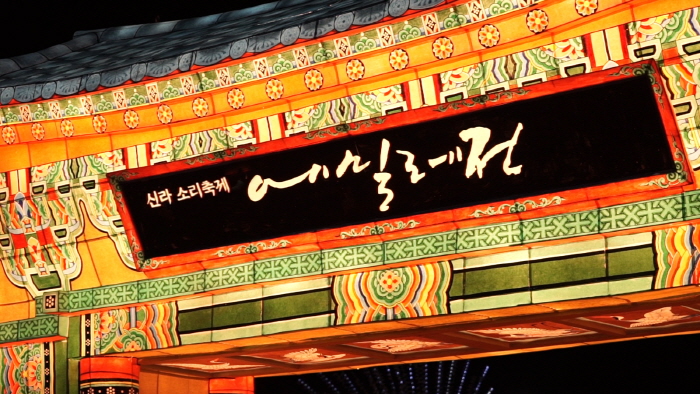

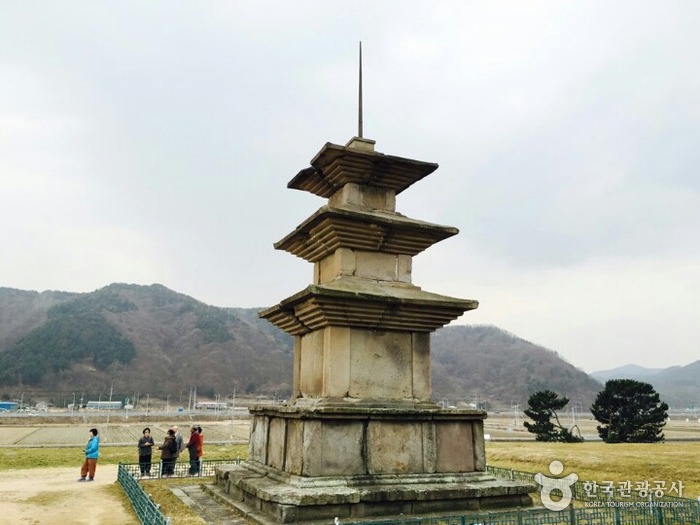
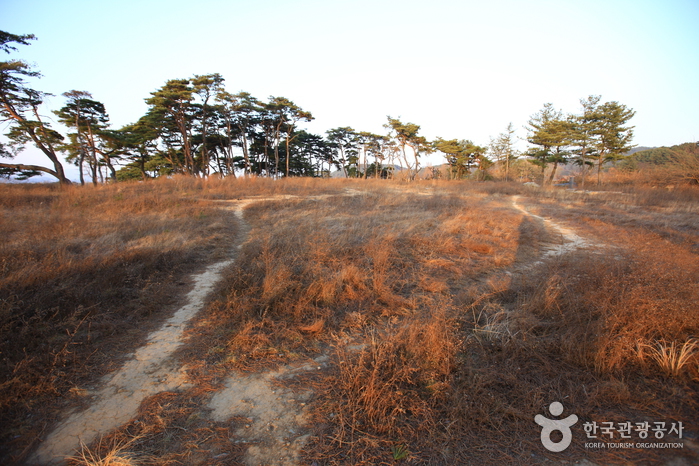
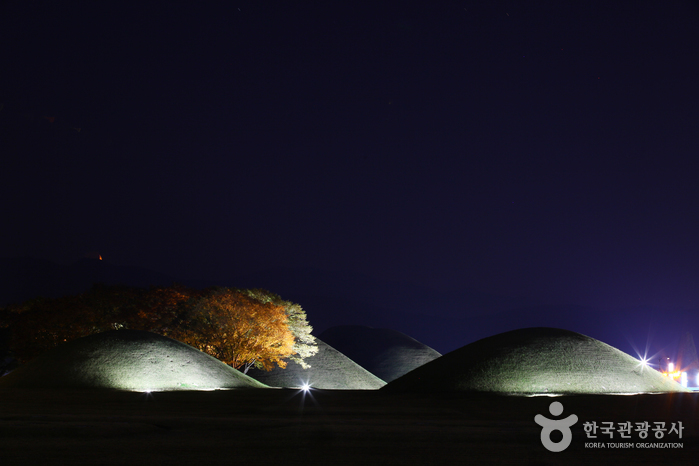
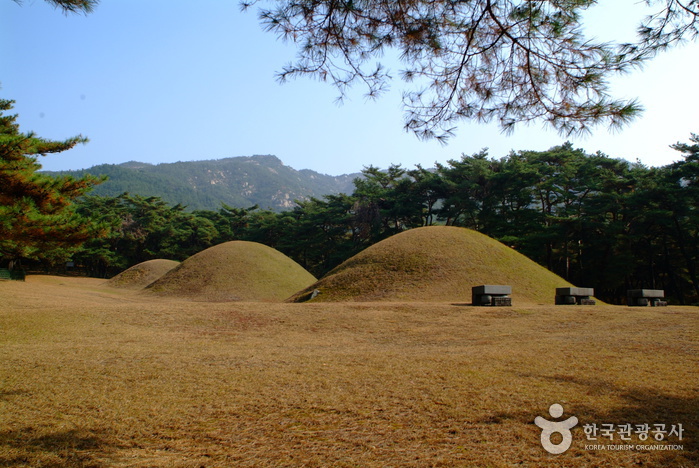
 English
English
 한국어
한국어 日本語
日本語 中文(简体)
中文(简体) Deutsch
Deutsch Français
Français Español
Español Русский
Русский